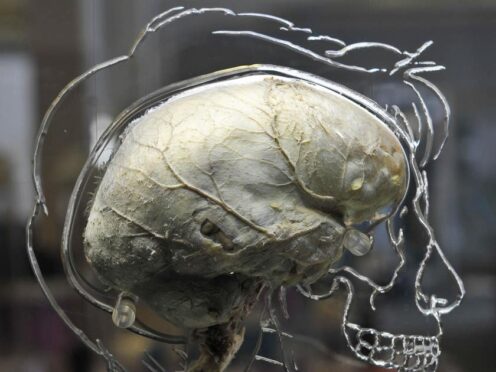
Researchers are investigating whether the herpes virus combined with a vaccine could cure an aggressive type of brain cancer in children.
For children with high-grade gliomas – malignant tumours – the three-year survival rate is only 11% to 22%.
Experts say the figures have not improved in 30 years and, currently, the few children who are cured have to undergo treatments that were initially developed for adults – such as radiotherapy and chemotherapy – and be harmful to their developing brains.
Safer and more effective treatment options for children are urgently needed to improve survival rates and minimise long-term side effects.Dr Gregory Friedman, professor of paediatrics at The University of Texas, USA, and principal investigator on the project, said: “Children with aggressive brain tumours are in desperate need of targeted, less-toxic therapies.
“Our research demonstrates that we can prime the immune system to target a tumour with a vaccine, which then enhances the ability of an altered cold-sore virus to stimulate an immune response against the tumour.
“Our talented team of academic and industry researchers will help develop and translate this approach, with the goal to more effectively treat paediatric brain tumours.”
Namrata and Bhavesh Pandya, from Harrow in London, lost their 14-year-old son Khushil to a diffuse midline glioma (DIPG) brain tumour in September 2017.
Commenting on the announcement, Namrata, who became a volunteer and a fundraiser for The Brain Tumour Charity – setting up the Khushil Pandya Fund, said: “Bhavesh and I will never be ready to accept that, in this day and age where science has progressed in so many areas, with this particular tumour, there’s very little knowledge on how and why it happens.
“There is no effective treatment or medication to help, and this hasn’t changed for over 40 years.”
“More effective treatment means shorter duration of illness, lesser side effects, better quality of life and could potentially save more lives and families.
“I believe that morally we should be investing in children’s brain tumour treatments to save them and protect them.”
Researchers will use a genetically engineered herpes simplex virus type 1 to eliminate cancer cells.
They say this type of virus is ideal for brain tumours because herpes naturally targets nerve cells.
The virus is engineered to enter the cancer cells and replicate rapidly, which breaks the cells open and exposes them to the immune system, effectively destroying them.
The virus has already been used in a small phase 1 trial where responses to the treatment were seen in 11 out of 12 children.
It also increased the number of immunity-boosting white blood cells within the tumours.
Now the scientists want to combine the virus with a cancer vaccine called SNAPvax, and they hope this approach will allow the vaccine to prime the body’s immune system to attack cancer cells, as well as potentially sustaining the effects of the virus.
This dual effect has already been observed in non-central nervous system adult tumours.
The £1.1 million project is being led by the MD Anderson Cancer Centre and collaboratively funded by the not-for-profit, medical research charities CureSearch for Children’s Cancer and LifeArc (based in the UK).
Dr Friedman’s team includes experts from the University of Alabama at Birmingham, Harvard University, Dana-Farber Cancer Institute, Mount Sinai and the University of Cambridge.
If successful, the new treatment will be tested in clinics within the next two years.

Enjoy the convenience of having The Sunday Post delivered as a digital ePaper straight to your smartphone, tablet or computer.
Subscribe for only £5.49 a month and enjoy all the benefits of the printed paper as a digital replica.
Subscribe